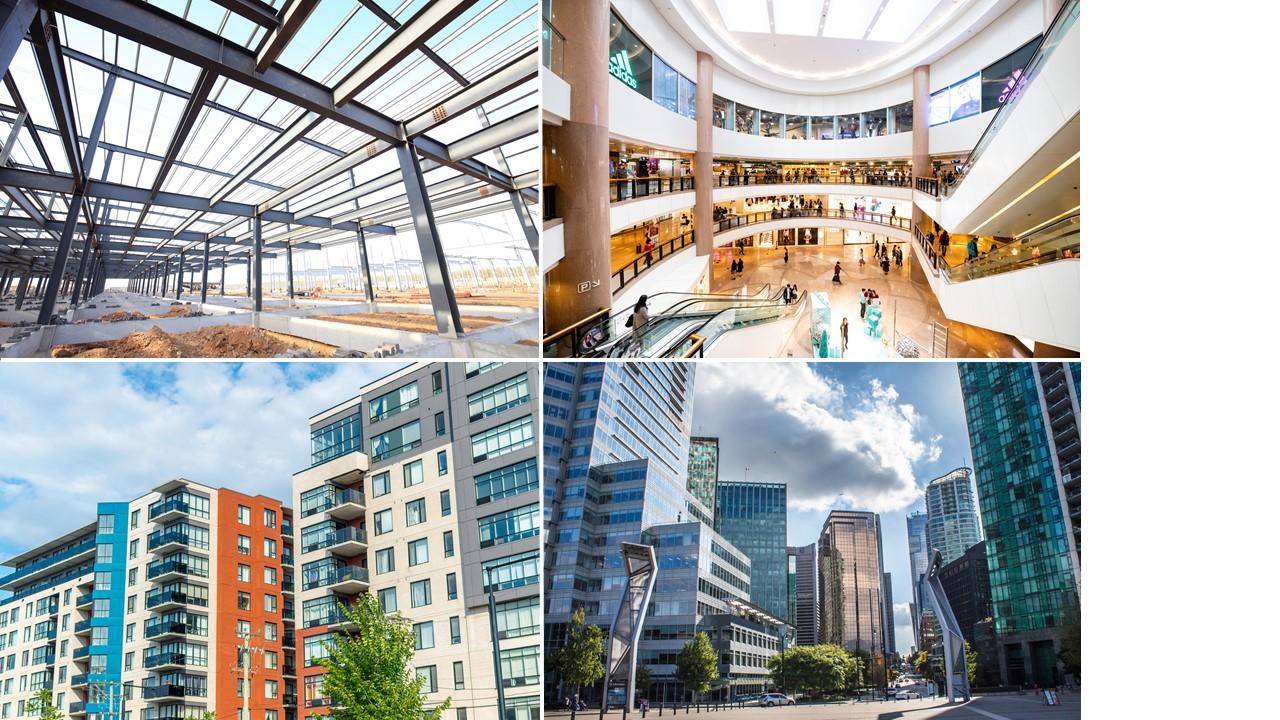As Bob Dylan famously sang, “The times they are a changin’.” But often in times of change, disruption and uncertainty, there can be space for new possibilities.
Where to begin? A global pandemic and the resulting variants; the war in Ukraine; high fuel prices; rising inflation, interest rates, bond yields, cap rates and construction costs; supply chain disruptions; housing affordability; labour shortages; recession fears; flagging consumer sentiment; working from home; the tangible impacts of climate change…. It’s a complex brew of issues, risks and challenges—and perhaps opportunities. But topping the list of concerns for CRE investors is inflation.
Inflation and cap rates
For the current generation of real estate professionals, inflation was just a theory, something to be studied in economics or history class, but hardly something to be concerned about. Then came the repeated economic hits from COVID-19, including supply chain issues; labour, goods and fuel shortages; and now, inevitably, inflation. As the world’s governments aggressively increase interest rates to contain surging inflation, the CRE industry finds itself navigating an unfamiliar landscape.
Inflation leads to higher bond yields, which reduces the risk premium for income producing CRE investments relative to risk-free investments like government bonds, putting upward pressure on cap rates and downward pressure on property values. Current indications from Altus Group suggest CRE investor yield expectations, which are expressed through cap rates, are indeed up approximately 15 bps over last quarter, implying a decline in property values of approximately 3%, and are expected to continue to climb through the remainder of 2022.1
Office and retail cap rates are expected to increase the most due to their typically longer leases, which limits those properties’ ability to increase rents to match inflation. While industrial properties typically have lease durations similar to office and retail, the incredible momentum of Canada’s industrial sector will likely see it continue to outperform the other asset classes and perhaps enjoy some further cap rate compression before levelling off or increasing in late 2022.
Multifamily properties are able to increase rents more frequently, typically annually. This allows multifamily rents to better pace inflation and is why multifamily properties are often described as a good (or at least a better) hedge for inflation. This ability to increase rents more frequently will likely see more modest cap rate increases in the multifamily sector relative to office and retail.
However, cap rates can be “sticky” and usually do not adjust quickly to changing market conditions. More often investment activity slows while buyers and sellers wait for the dust of change to settle. In the near term, expect to see a wider bid-ask spread. And just as residential sales are down 30% to 40% year over year, expect reduced CRE investment activity while the market waits to see if higher cap rates are a blip or the new normal.
Cash flow pressures
Inflation also puts pressure on property cash flows through higher interest rates on property debt and higher nonrecoverable property expenses. Inflation and rising interest rates also increase the likelihood of a recession, leading to additional pressure on property cash flow due to higher vacancies as business tenants delay growth plans or reduce their workforce.
For borrowers with upcoming term loan maturities, today’s higher interest rates can complicate those renewals. Most income producing term loans are sized to generate minimum debt service coverage, or DSC, of approximately 1.25x – a little less for multifamily properties. A $10 million commercial mortgage with a five-year term structured five years ago to generate 1.25x DSC at 3.5% interest and a 25-year amortization would today have an outstanding balance of about $8.6 million. Assuming the same property has a net operating income, or NOI, and a renewal rate of 5.5%, the property would today support a loan of only about $7.3 million to achieve 1.25x DSC at its remaining 20-year amortization, or about $8.2 million if re-amortized to 25 years, requiring a potential equity infusion or additional collateral of around $1.3 million at the remaining amortization, or approximately $400,000 at a 25-year amortization for the loan to renew.
For investors and developers, the rapid emergence of inflation and higher interest rates can challenge deals in flight that were baked with ageing ingredients. An acquisition that looked tasty when it was negotiated six months ago at a 5% cap rate that assumed 3.5% term financing is a lot less palatable if closing today with term debt closer to 5.5%. Likewise, construction of an income producing property that launched two years ago with 75% project financing might require an equity infusion to term-out the construction debt at today’s higher interest rates.
Opportunities ahead
Of course, change also ushers in opportunity. Some of today’s most successful CRE investors got their start capitalizing on the CRE market turbulence of the mid-1990s. Seldom-traded properties might become available as current owners opt to lock-in gains. Some property owners or developers might be receptive to a new partner to bolster their equity. And no doubt war chests are quietly being assembled to capitalize on potential distress situations should inflation remain high and interest rates continue to rise.
These are the times when prudent borrowers will be grateful for a good relationship with their banker. The few current CRE market participants who have lived through volatile times like this know that lenders want their customers to be successful. And that most of all, lenders (and their regulators) don’t like surprises. Lenders respond well to transparency and open communication. It’s best to engage your lender early if you see smoke on the horizon. Ignoring emerging challenges is seldom a good strategy.
Changing times indeed. If Bob Dylan were a CRE investor he might sum things up like this:
Come landlords and lenders throughout the land
And don’t disregard what you didn’t have planned
CRE’s fundamentals are beyond your command
If a deal you are arrangin’
Be careful that castle’s not built upon sand
For the times they are a changin’
1Altus Group
